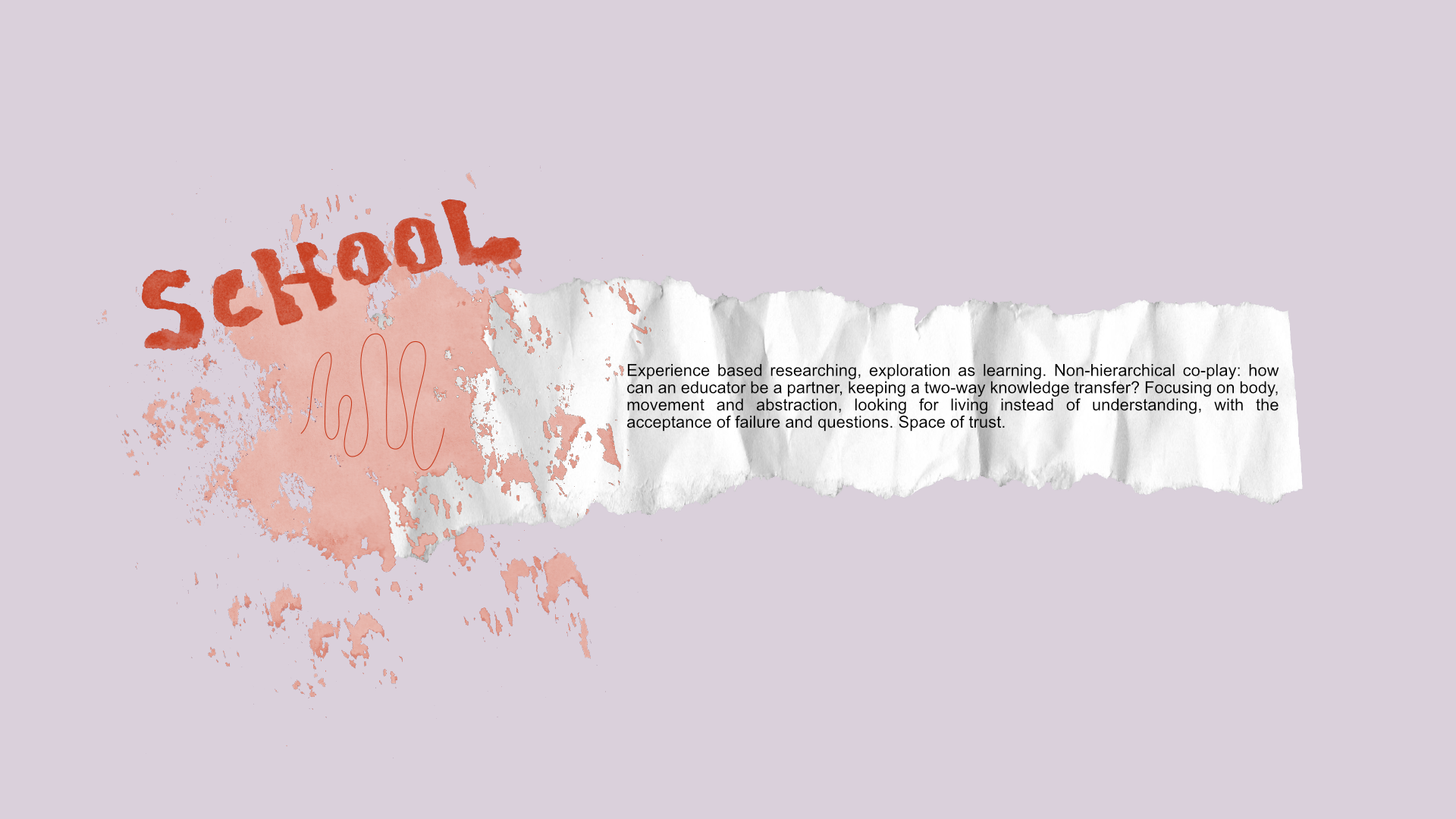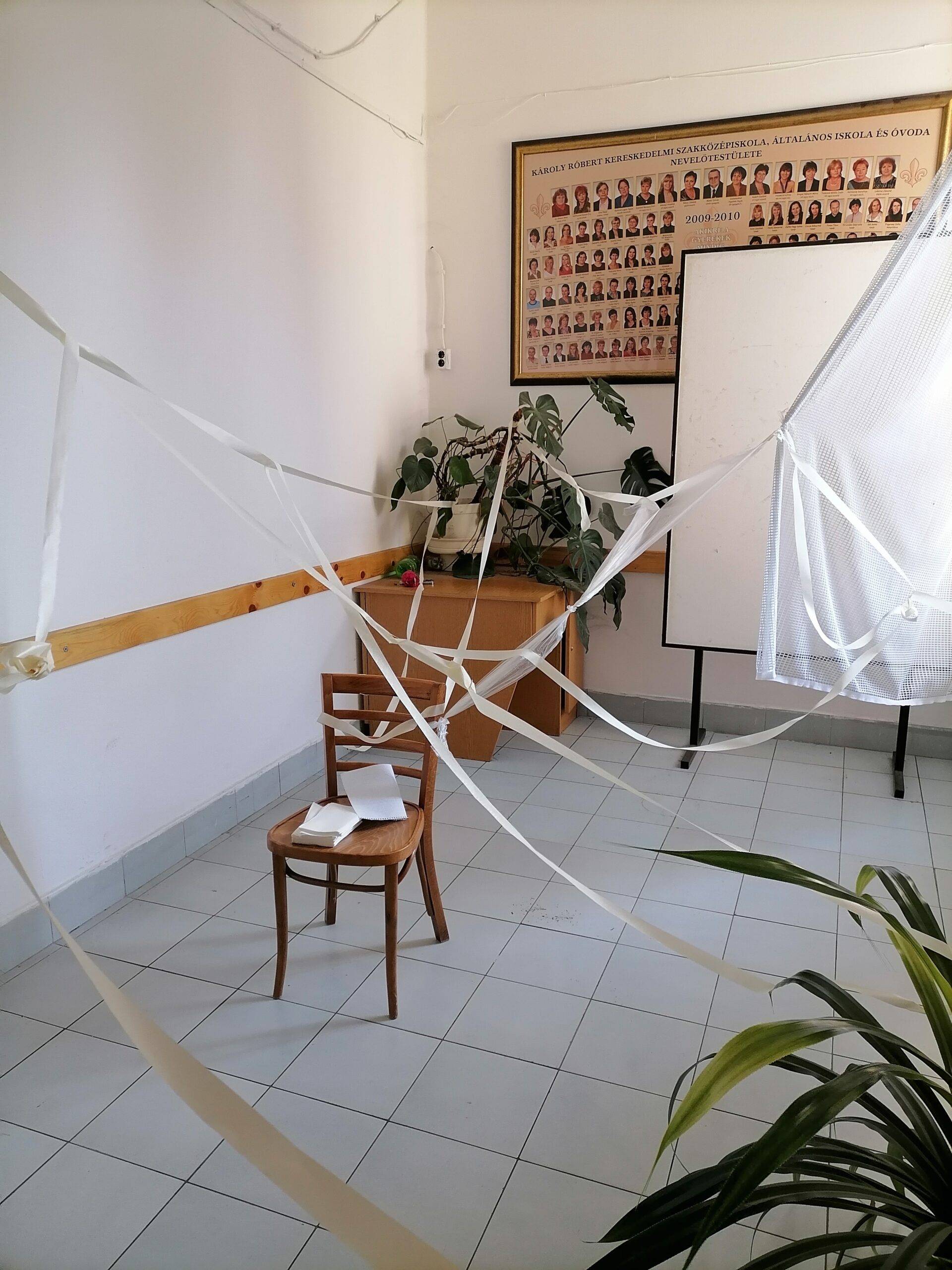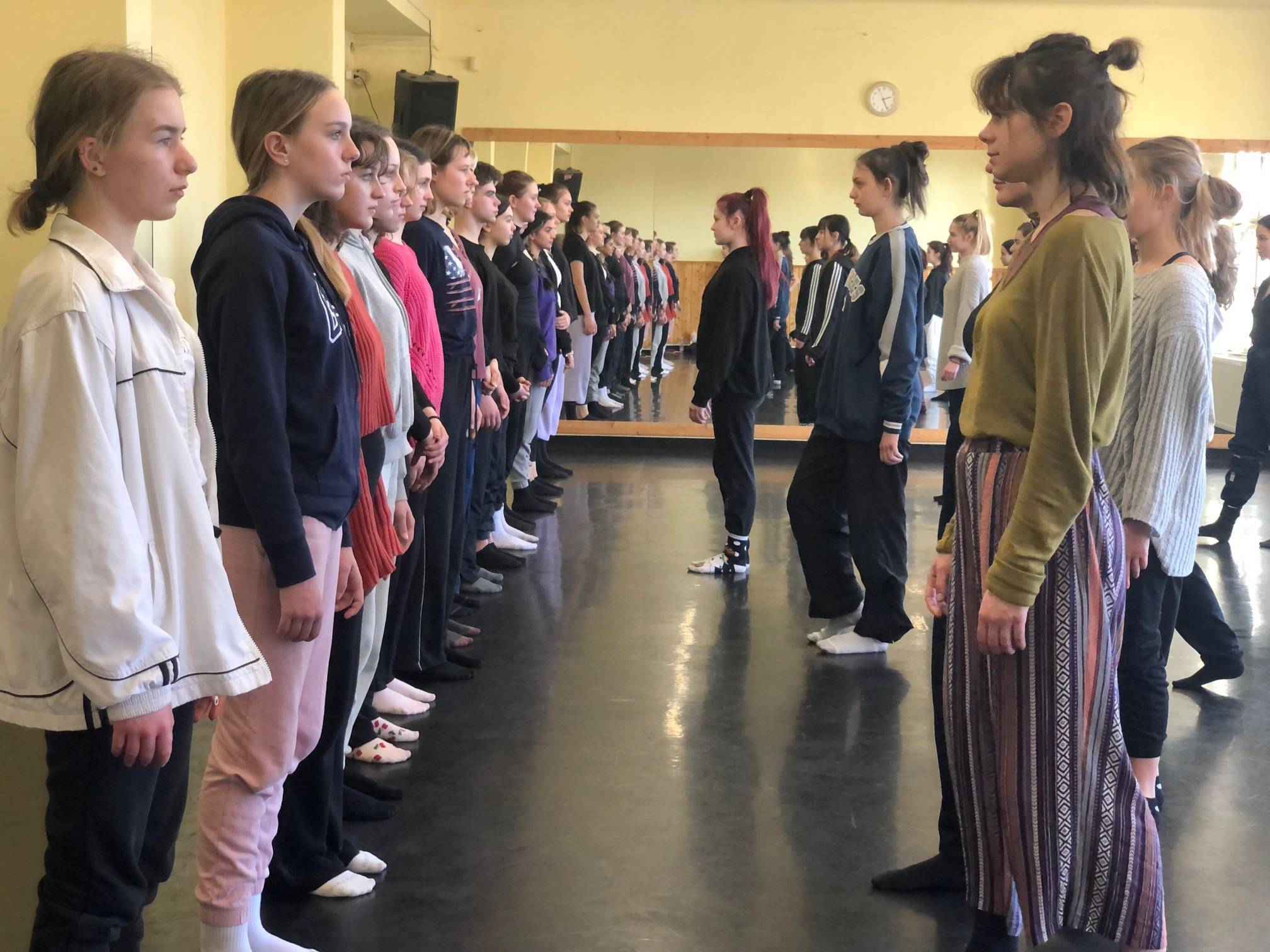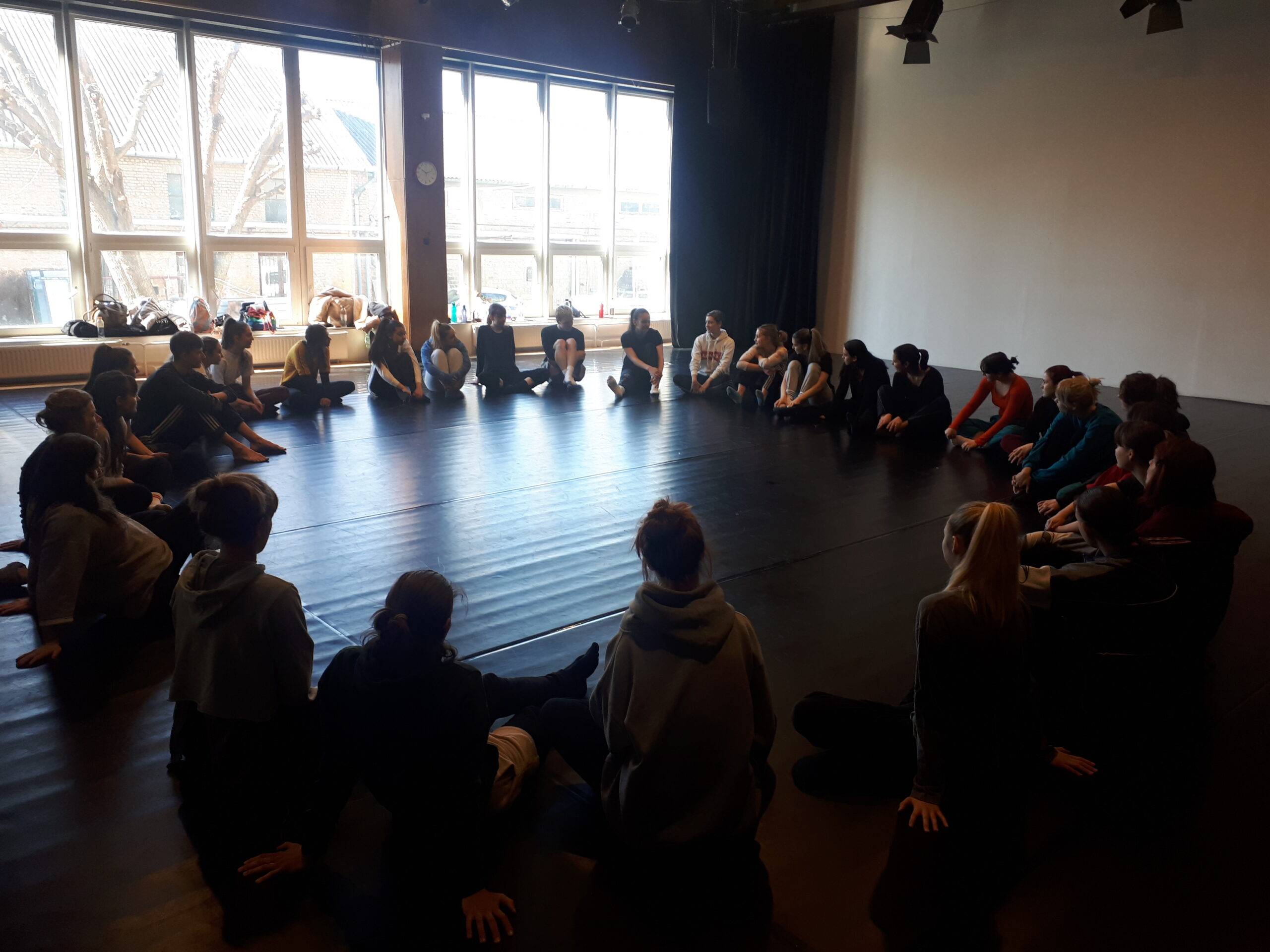
The choreography of our life and creative spaces/Installative room decoration
Our aim was to use our built environment as the subject of our creation through becoming critical observers and active creators of our living spaces. How is actually the space where we spend our everyday lives? What is in our environment?How can we get inspired from what we have? Svung research groups already existing public space workshops, community choreographies, maps and space installations were inspirations for students to make their own choreographies and try it together with their peers and teachers. Other references were: William Forsythe – Choreographic objects, Simone Forti – Dance constructions, Bruce Nauman – Green Light Corridor.
The project, which strengthens the students’ individual perspectives and creativity is possible to develop into a community program, spatial instructions created can be incorporated in the environment, expanding our ideas of public spaces and working methods.



Qualities of touch and the boundaries of the body / Sensitization of our bodily autonomy

Who respects their body? Does anybody else have the right over our bodies? What does a young dancer, a student, an aspiring creator experience when their main working tool is their own body?
A life-long learning process that we need to practice throughout our lives: How to take care of myself, the other, each other?
During this workshop we are moving-thinking around these questions together with high-school students. We experience that students don’t always feel comfortable or being able to say no to a touch or an instruction. May it concern a teacher that is in a power position or even with their peers. This is why we are dealing with the autonomy of the body, the boundaries of self during a creation process, the relation between choreographer and dancer, teacher and students, and the respect towards our own body. We value the importance of students having the space to name and claim their boundaries, to recognize the different qualities of touch and individual choice-making.
We are questioning and grounding the starting point of the dancers’ work. It’s important to emphasize a healthy body image, especially for professionals working with their physicality. We work through their experiences and desires through playful creative processes.
Viewpoints technique and non-hierarchical creation
The technique that was born during the postmodern era of dance and was first described by Mary Overlie, helped the students to practice being sensitized to the present moment and to exchange the remnant of “creator/authority” roles from classical and modern times for observer/participant. Spontaneous, intuitive and non-hierarchical creation was made possible with special attention on collective work, and group cohesion.

Closing time, collective creation, reflection

The closing session served both as looking back and forward, to see the happenings of the different occasions in unity.
Through contact improvisation as a practice of democratic dance form where hierarchy dissolves, we emphasized touch as the primary tool for connection. Giving and receiving weight as a play where the roles are constantly changing. Tuning into one another is the key to our dance experience.
We also had processed consequences through creating concrete etudes, using simple movement motives in the frame of a structured improvisation. We aimed to create situations, where partaking, tuning in, and choice-making is not controlled by a higher power, we stimulated not only performative qualities but skills beyond, that makes artistic presence and attitude palpable and in a wider perspective forms the base of transferable knowledge.